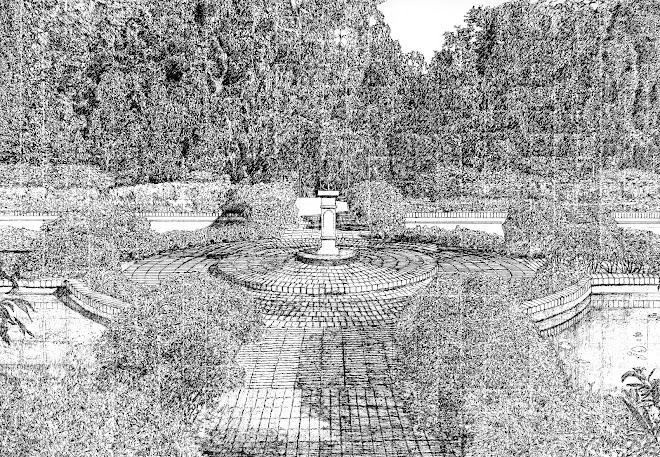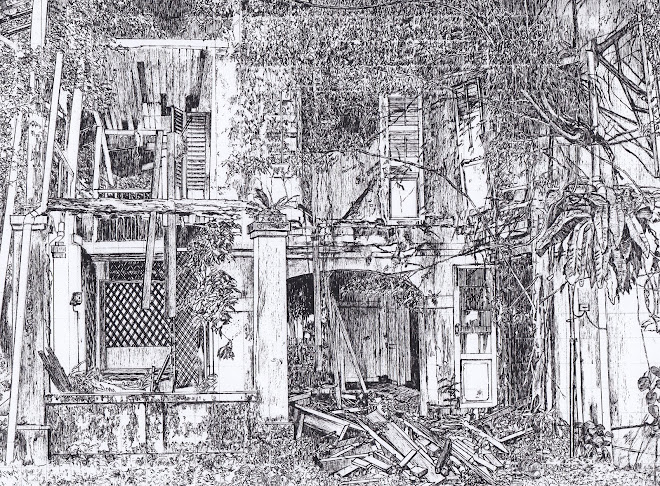The First Work: The Headless Monks and the Light Boxes
I entered the gallery. It was very dark. I saw five headless monks in ghostly grey robes sitting and meditating, three at the far end of the room facing me and two near the entrance with their backs turned to me. Between them was a large empty space. A haunting hollow sound, followed by a woman's wail, like a siren's song, drowned me in despair and sorrow. Ten light boxes lined the walls; five on each side. A voice said to me, " Go, look at the light boxes on the walls."
The first light box showed a blue city with seven headless monks in white robes floating in the air. The birds standing still were upside down; they could not fly.
The second light box showed a monochrome Chinese painting. Human angels with bird wings and legs flew above the landscape.
The third light box showed a mountainous desert with six traditional string instruments. At the foot of the mountains were tombs. Peacocks glided across the desert.
The fourth light box showed an orange plain where deers and antelopes roamed freely. In the distance, boats sailed along a river running next to a city. The brightly-lit landscape was darkened by flocks of crows hovering above it.
The fifth light box showed a sepia picture of wreckage and ruin, litter and leaves, debris and waste, scattered along a polluted river with American ships sailing over.
The sixth light box showed a Japanese burial ground in a tropical rainforest. The claustrophobic clusters of ancestral tablets looked like architecture.
The seventh light box showed a panoramic aerial view of a city set against a morning sunrise. Green parrots and purple clouds sailed over the landscape.
The eighth light box showed a traditional silk painting depicting Paradise. In it were birds of every species and colour, as well as phoenixes in their glorious splendour. A few horses, a lion and tiger, dwelled in peace.
(... ...)
The Second Work: The Children of Horror
I came face to face with a triptych.
The first panel showed a very old classroom with wooden furniture and wooden floor. Students in white sat quietly in neat rows; they looked like tombstones in a graveyard. Their eyes were hollow and their faces were without colour. Surely they could not be alive; they were ghosts from a forgotten and distant past. The schoolmaster, a tall white figure, stood watch in a corner.
The central panel, as unsettling as the first, showed nine boy scouts standing quietly. Six of them stared at me with star amblems covering their eyes. The laces of their left and right shoes had been tied together. They could not move, for if they had tried, they would probably have fallen.
The last panel was the scariest of all. It was like a mirror reflection of the first, except where there should have been faces, there were black empty spaces, gaping voids of darkness.


